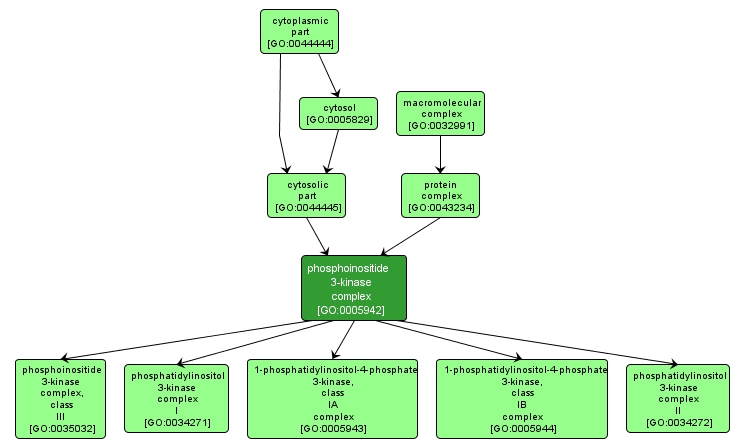GO TERM SUMMARY
|
| Name: |
phosphoinositide 3-kinase complex |
| Acc: |
GO:0005942 |
| Aspect: |
Cellular Component |
| Desc: |
A complex containing a heterodimer of a catalytic subunit and a regulatory (adaptor) subunit of any phosphoinositide 3-kinase (PI3K). |
Synonyms:
- 1-phosphatidylinositol 3-kinase complex
- phosphatidylinositol 3-kinase complex
- PI3-kinase p85-subunit alpha- PI3-kinase p110 complex
- PI3K complex
- PIK3C3-PIK3R4 complex
- PIK3CA-PIK3R1 complex
|














